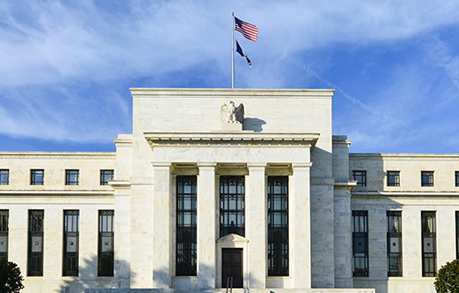We have all been front-seat followers of the Federal Reserve surprisingly boosting its balance sheet again from September of last year. After two years of tapering liquidity in the system that was deemed to be excessive, in an effort to normalise monetary policy in the wake of unprecedented action in the course of the financial crisis, the Fed has channelled more than 50% of the tapered amount or over 400 billion dollars back into the market.
We have also taken note of why. In September, the money markets froze up in our faces, with overnight lending rates spiralling into double-digit percentages. Before any material damage could be done to the economy, Jay Powell and his colleagues came to the rescue and saved the interbank market by re-igniting the printing machine. It was conspicuous as much as it was ironic that Powell insisted that his actions were not QE but a limited modification to the short end of the curve.
He rightfully got the flack for it. An expansion of the Fed balance sheet, particularly in such quantity, can only be categorised as quantitative easing. Even more concerning was the potential cause for the financial bottleneck. As I laid out in this space in an early
November piece, it may have been regulatory pressures that triggered massive balance sheet shifts rotating assets out of loans and cash into bonds at banks such as JP Morgan in the course of 2019, inadvertently draining liquidity from the interbank market.
As I said back then, it appears the remnants of overregulation left by the aftermath of the crisis are eating their children. Private banks are forced to go along and be compliant with the imposed government framework, but they will do what’s right for them. If that meant that their behaviour induces collateral damage and triggers disequilibrium elsewhere, so be it. As we have witnessed time and again, the Fed can be relied on setting things straight, particularly if it is being held hostage by the big players.
Anyway, the doubters of this theory had reason to jubilate last week, as the reading of the balance sheet size for the first week of the year actually presented us with a decline of 24 billion dollars. It appears the Fed no longer has to support the ultra-short-term market and withdrew their purchasing activity from probably the overnight and 1-week markets. In other words, for them, it testified to the notion that Powell was in fact right and the Fed intervention has only been temporary and might really not constitute QE as such.
Well, not so fast. While it is evident that the pressure cooker of September seems to have lost its mojo, it is by far not clear it will be the end of Fed buying. If the causes of the interbank freeze are as suspected, it will inevitably require more intervention. Also, we have already had a weekly liquidity reduction once before, in November, and the balance sheet expansion resumed right thereafter. Even if there were no further increase in purchases, the Fed already added a whopping 400 billion to the system.
In any case, Donald Trump will not permit Jay Powell to put a dent into his paradigm. Powell looks to be on the White House’s short leash, and it is not inconceivable that he has been instructed to back economy and stock market into the election year. 400 billion of extra excess liquidity will do their part for equities and support the economy absent any fears of inflation. As the labour numbers revealed on Friday, wage growth keeps decelerating and providing the disinflationary backbone for this strategy.
And even if it wasn’t for Trump to tighten the thumbscrews, it would be inconceivable for the Fed to materially reduce the excess liquidity. Financial markets were likely to collapse as a result. Feeding the system has become a perpetuum mobile of sorts, with one existential function, namely to take a sick man into overtime. For how long this is going to work no one can tell. That’s the advantage of an unsecured fiat money system, one must presume.
